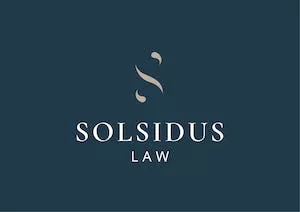Intangible assets are steadily becoming the most valuable assets of an organisation, often accounting for over 60% of a company's value. The reason is simple; strong brands influence customers' decision-making process, and ensure that premium prices can be charged. Intangible assets including trademarks, brands, patents, copyright etc. (IP) are constantly swotted and refreshed to respond to evolving customer trends and to keep ahead of the competition, thereby increasing their net-worth. But it is often hard to source information about the financial aspects of the IP being monitored and managed. For example, the amount that has been invested in IP is not always accessible. This is largely due to the intangible nature of IP assets and the difficulty in quantifying effort made in creating and developing IP. At the same time, financial services centres including the UK, Luxembourg, Ireland, and as of 2012, Cyprus, have introduced and applied favourable tax treatment for profits generated from IP exploitation; and rightly so, given the post-millennium digitalisation of communications, technology, design, production and services. But following years of loose regulation of the taxation of income generated by IP, and within a wider framework of combating tax evasion at the wake of the worst economic decline modern world has been facing since 2008, the OECD have decided to take action.
Action 5 of the Base Erosion and Profit Shifting (BEPS) was designed to strengthen "the substantial activity requirement used to assess preferential regimes so as to realign taxation of profits with substantial activities". In short, Action 5 was drawn up to bring an end to aggressive tax planning, that allowed the application of a favourable tax rate on income generated from IP exploitation in the absence of evidence of expenditure incurred by the taxpayer for development of IP linked with that income. For this and other substance-related reasons, OECD in coordination with the G20 countries, have developed in 2015 the concept of the 'modified nexus' approach that "only allows a taxpayer to benefit from an IP regime to the extent that it can show that it itself incurred expenditures, such as R&D, which gave rise to the IP income."
Following consultation received on the applicability of the 'modified nexus' the decision is for countries that have IP regimes inconsistent with the said approach to take steps to amend them. Moreover, a timeline has been adopted so that there can be no new entrants (i.e., new taxpayers or new IP assets) to such IP regimes after June 30, 2016. Taxpayers benefiting from existing regimes that do not comply with the modified nexus approach will not be able to receive any additional tax benefits from those regimes after June 30, 2021.
Cyprus via an announcement of the Ministry of Finance on 30th December 2015 will be amending its existing IP regime to comply with the 'modified nexus' approach, effective July 2016. The amendments, although currently being drafted, are expected to address the following:
- Only expenditures incurred for improving the IP asset after it was acquired would be treated as qualifying expenditures. This is to avoid harmful tax practices associated with acquisition costs. Acquisition costs are, however, expected to be included in overall expenditures and would therefore reduce the portion of qualifying expenditures compared to overall expenditures (which in turn would reduce the income that could benefit from an IP regime). Consequently, if a taxpayer does not continue to develop acquired IP (for example through proven R&D), there will effectively be no benefit under an OECD-compliant IP regime (the new laws). Even where the taxpayer continues to develop the IP, it is expected for benefits to be reduced compared to the benefits currently available under the existing IP regime.
- Amendments are expected to provide for a practical approach to tracking and tracing R&D expenditures, particularly those incurred prior to the adoption of the 'modified nexus' approach. This is expected to take the form of spontaneous and compulsory exchange of information on tax rulings issued on the matter.
- Safeguards are expected to be adopted in the amended law that prevent taxpayers from inappropriately benefiting from the grandfathering rules.
- The interpretation of qualifying IP assets is expected to become narrower.
At the moment, the IP box regime in Cyprus defines IP qualifying assets to include trademarks (which are the cornerstone of branding management for organisations) as well as patents and copyright. It is anticipated that following the amendments of July 1st 2016, trademarks could be excluded from the list of qualified IP. This was the significant give-away that countries promoting IP box regimes had to settle for in order for IP box regime to survive.
Therefore, for organisations and taxpayers that benefit from branding awareness campaigns developed at the back of designed and legally protected trademarks, now is the right time to structure their IP strategy in a way that continues to be beneficial for them until 30th June 2021. It is certainly hoped that trademarks survive the proposed amendments given that they represent possibly the most direct means of communicating a brand with customers.
For more information on developing a sound IP strategy for your organisation, feel free to contact Stella Koukounis at s.koukounis@solsiduslaw.com or George Vrikis at g.vrikis@solsiduslaw.com who can advise on the options available.
The content of this article is intended to provide a general guide to the subject matter. Specialist advice should be sought about your specific circumstances.

